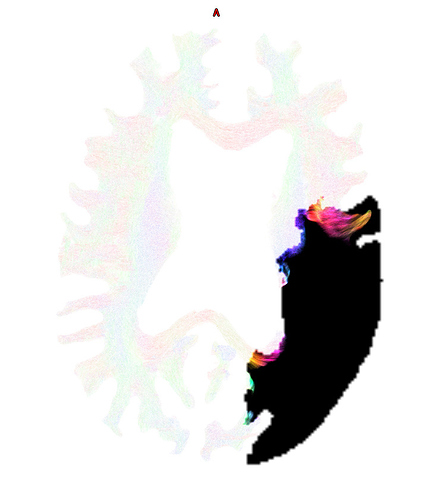Thanks for the detailed response.
Here are the details.
Preprocessed DWI:
************************************************
Image: "DWI_denois_preproc_nobias.mif"
************************************************
Dimensions: 96 x 96 x 55 x 80
Voxel size: 2.5 x 2.5 x 2.5 x 1
Data strides: [ -2 3 4 1 ]
Format: MRtrix
Data type: 32 bit float (little endian)
Intensity scaling: offset = 0, multiplier = 1
Transform: 1 0 0 -110.1
-0 1 0 -87.53
-0 0 1 -52.51
command_history: /share/apps/MRtrix3/2017-05-30/mrtrix3/bin/mrconvert "dwi_post_eddy.nii.gz" "result.mif" "-stride" "-2,3,4,1" "-fslgrad" "dwi_post_eddy.eddy_rotated_bvecs" "bvals" "-nthreads" "4" "-quiet" (version=3.0_RC1-83-gc16a3d0e)
/share/apps/MRtrix3/2017-05-30/mrtrix3/bin/mrconvert "result.mif" "/data/jag//mrtrix/DWI_denois_preproc.mif" "-nthreads" "4" "-quiet" (version=3.0_RC1-83-gc16a3d0e)
/share/apps/MRtrix3/2017-05-30/mrtrix3/bin/mrconvert "/data/jag//mrtrix/DWI_denois_preproc.mif" "/data/jag//mrtrix/dwibiascorrect-tmp-1OUN2F/in.mif" "-nthreads" "4" "-quiet" (version=3.0_RC1-83-gc16a3d0e)
/share/apps/MRtrix3/2017-05-30/mrtrix3/bin/mrcalc "in.mif" "bias.nii" "-div" "result.mif" "-nthreads" "4" "-quiet" (version=3.0_RC1-83-gc16a3d0e)
/share/apps/MRtrix3/2017-05-30/mrtrix3/bin/mrconvert "result.mif" "/data/jag//mrtrix/DWI_denois_preproc_nobias.mif" "-nthreads" "4" "-quiet" (version=3.0_RC1-83-gc16a3d0e)
comments: FSL5.0
dw_scheme: 0,0,0,0
[80 entries] 0,0,0,0
...
-0.9950762097,-0.07915032335,-0.05965369467,1100
0.4215337843,0.5028266271,-0.7546354429,1100
mrtrix_version: 3.0_RC1-83-gc16a3d0e
FOD file:
************************************************
Image: "WMfod.mif"
************************************************
Dimensions: 96 x 96 x 55 x 45
Voxel size: 2.5 x 2.5 x 2.5 x 1
Data strides: [ -2 3 4 1 ]
Format: MRtrix
Data type: 32 bit float (little endian)
Intensity scaling: offset = 0, multiplier = 1
Transform: 1 0 0 -110.1
-0 1 0 -87.53
-0 0 1 -52.51
command_history: /share/apps/MRtrix3/2017-05-30/mrtrix3/bin/mrconvert "dwi_post_eddy.nii.gz" "result.mif" "-stride" "-2,3,4,1" "-fslgrad" "dwi_postdy_rotated_bvecs" "bvals" "-nthreads" "4" "-quiet" (version=3.0_RC1-83-gc16a3d0e)
[6 entries] /share/apps/MRtrix3/2017-05-30/mrtrix3/bin/mrconvert "result.mif" "/data/jag/mrtrix/DW_preproc.mif" "-nthreads" "4" "-quiet" (version=3.0_RC1-83-gc16a3d0e)
...
/share/apps/MRtrix3/2017-05-30/mrtrix3/bin/mrconvert "result.mif" "/data/jag/mrtrix/DW_preproc_nobias.mif" "-nthreads" "4" "-quiet" (version=3.0_RC1-83-gc16a3d0e)
dwi2fod "msmt_csd" "DWI_denois_preproc_nobias.mif" "resp_wm.txt" "WMfod.mif" "resp_gm.txt" "gmfod.mif" "resp_csf.txt" "csffod.mif" "dwimask.nii.gz" "-quiet" "-nthreads" "4" (version=3.0_RC1-83-gc16a3d0e)
comments: FSL5.0
mrtrix_version: 3.0_RC1-83-gc16a3d0e
prior_dw_scheme: 0,0,0,0
[80 entries] 0,0,0,0
...
-0.9950762097,-0.07915032335,-0.05965369467,1100
0.4215337843,0.5028266271,-0.7546354429,1100
Track file before sift.
***********************************
Tracks file: "FullACTtracts.tck"
act: 5tt_on_DWI_1mm.nii.gz
backtrack: 1
count: 9523144
crop_at_gmwmi: 1
downsample_factor: 3
fod_power: 0.25
init_threshold: 0.100000001
lmax: 8
max_angle: 60
max_dist: 300
max_num_seeds: 15000000000
max_num_tracks: 15000000
max_seed_attempts: 1000
max_trials: 1000
method: iFOD2
min_dist: 10
mrtrix_version: 3.0_RC1-83-gc16a3d0e
output_step_size: 0.5
rk4: 0
samples_per_step: 4
seed_dynamic: WMfod.mif
sh_precomputed: 1
source: WMfod.mif
step_size: 0.5
stop_on_all_include: 0
threshold: 0.100000001
timestamp: 1496684523.2961580753
total_count: 17893779
unidirectional: 0
ROI: seed WMfod.mif
As you can see, there is about twice seeded as selected streamlines. Note that this is a brain with stroke (~20% of the brain missing). If you see anything out of place, please let me know so I can fix things before starting the analyses on all subjects.
This is an example of final tractography after sift, the dark part is where the lesion is located from the manual segmentation.
